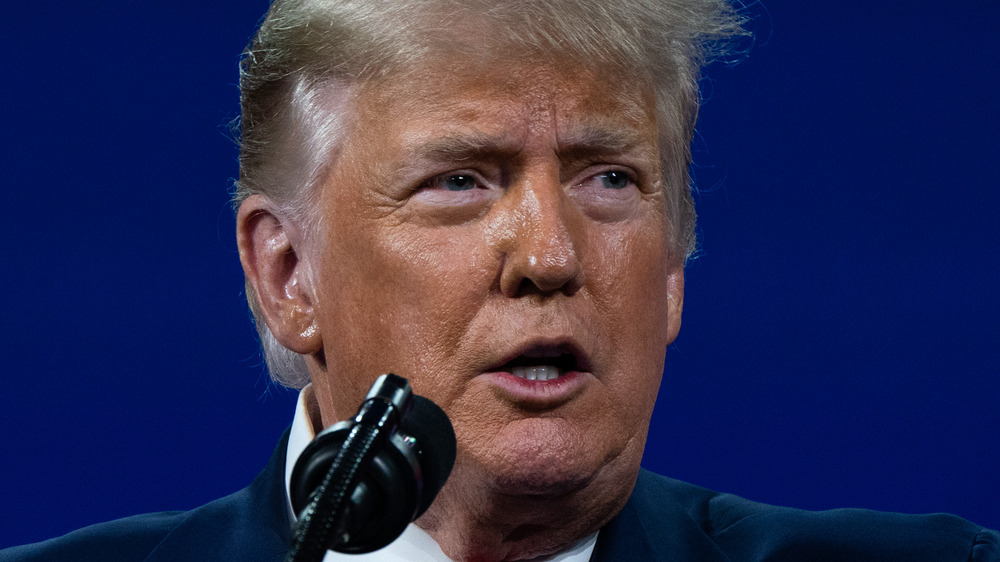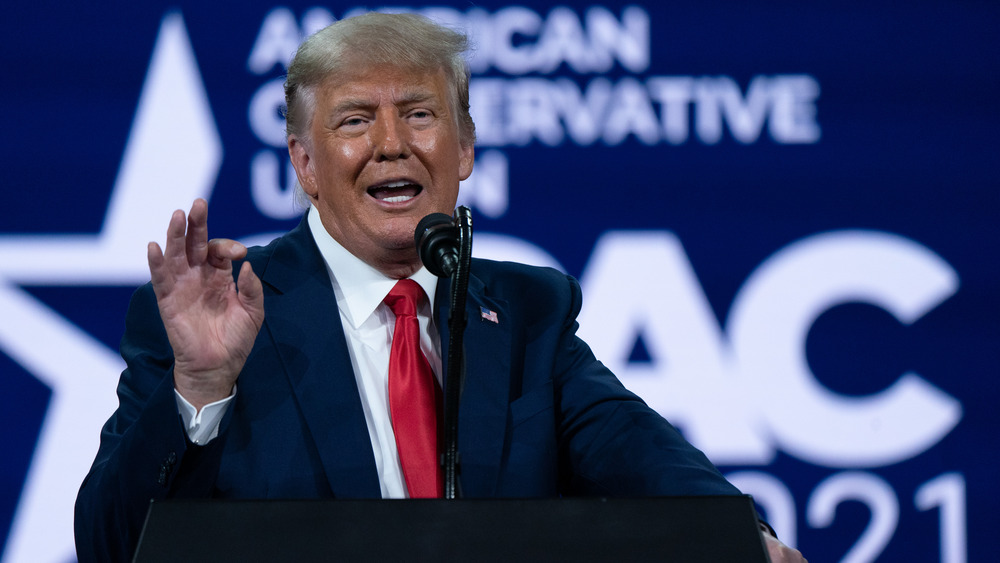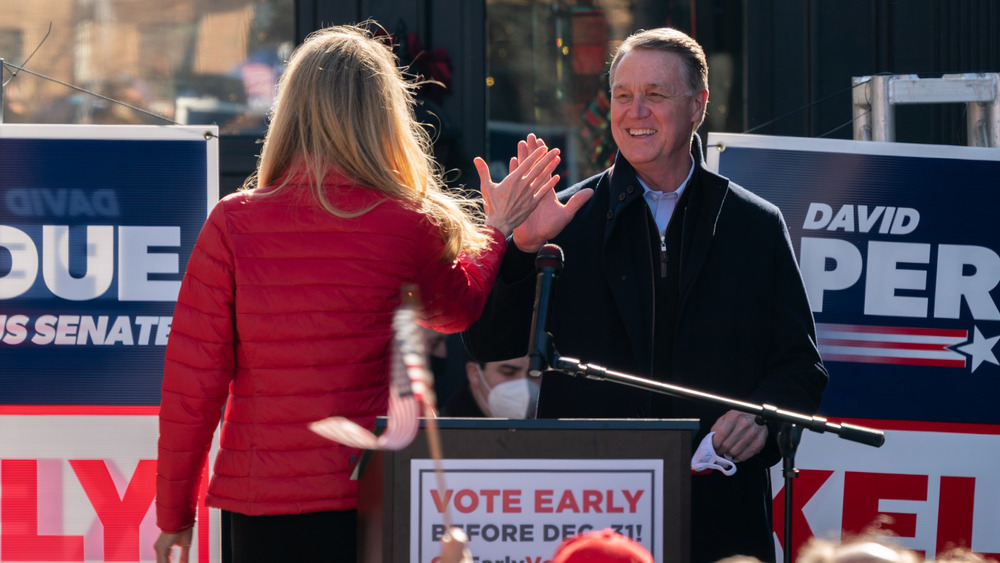The Real Reason Trump Had To Return Millions Of Dollars
Have you ever checked your bank account balance, only to be unpleasantly surprised by a recurring subscription's monthly charge? That's what happened to some supporters of President Donald Trump's 2020 reelection campaign. They thought they'd given the former president a one-time donation, but instead were charged repeatedly. The Trump campaign had to return $64.3 million to donors in October, November, and December 2020, The New York Times reported on April 3, 2021.
As the Times explained, refunds are a part of plenty of political campaigns. Some donors might, for example, unknowingly give more than the legal contribution limits for federal elections. But mistakes like those don't tend to lead to tens of millions of dollars in refunds. The paper reported that over the same time period, current President Joe Biden's presidential campaign only refunded $5.6 million to donors.
For all of 2020, meanwhile, the Trump campaign issued $122.7 million in refunds, while the Biden campaign issued just $20.7 million. As Forbes pointed out, that $122-plus million figure represents almost 11% of the Trump campaign's total fundraising efforts. Not all $122 million of the refunds were because of the recurring-donation misunderstanding, but many were. Here's how so many people were apparently tricked into donating more than they'd intended to the former president.
Trump's recurring-donation tactic caused bank fraud claims to spike
When people who'd thought they donated once to former president Donald Trump's reelection campaign started seeing multiple charges, they called their banks, thinking they were victims of fraud. The claims reached a point that an estimated 1 to 3% of all fraud claims at national banks were related to WinRed, a Republican fundraising platform, per The New York Times. "It started to go absolutely wild," a Wells Fargo fraud investigator told the Times of the WinRed fraud claims.
So, how did so many people get roped into recurring donations, when they thought they were giving a one-time gift? As the Times reported, it's all in the fine print. A small yellow box on the WinRed website in March 2020 read, "Make this a monthly recurring donation." If donors didn't catch the box and manually uncheck it, their donation wouldn't be a one-time one after all. And in addition to that box, a second small yellow box asked for an "additional donation" on former President Trump's birthday. It, too, came pre-checked.
And while the March 2020 "monthly recurring donation" box went unnoticed, the Trump campaign amped things up in September, the Times noted. Another small, pre-checked box read, "Make this a weekly recurring donation." So donors who wanted to make a one-time contribution were being charged every week instead.
Similar tactics have been used in local elections
Reporter Shane Goldmacher, the author of The New York Times' report on the Trump campaign's finances, tweeted that similar recurring-donation tactics were used by Republicans in Georgia during the state's runoff elections. This isn't just a sneaky campaign trick connecting to a presidential election — it's something political donors should look out for in local races, too.
"While this story is focused on the Trump operation, I would note that these tools and tactics are now being adopted across the GOP ecosystem," Goldmacher tweeted on April 3, 2021. "Weekly recurring prechecked boxes were used in the Georgia runoffs, for instance. Predictably, refunds spiked."
Reading the fine print is always a good idea. But if you're donating to a political campaign, it's especially crucial. The last thing anyone wants is to have their bank account go into overdraft because of a purchase they didn't even realize they were making.



